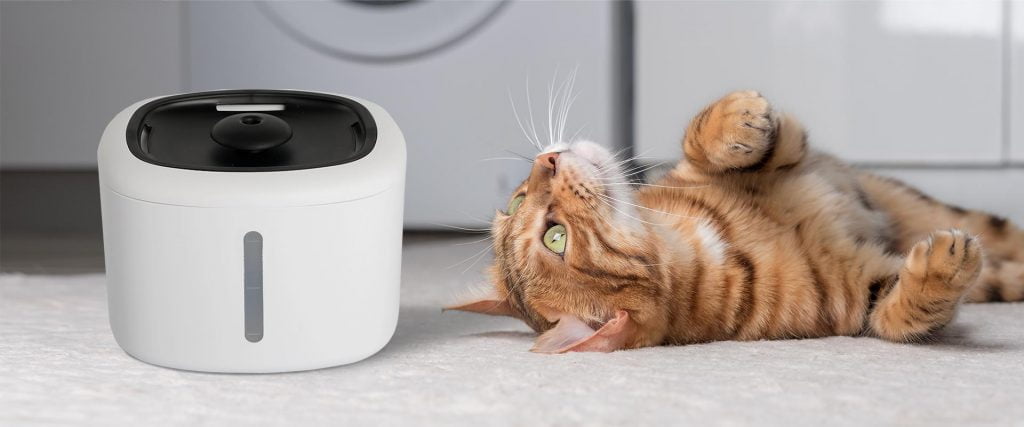Introduction
Pets, especially dogs and cats, can sometimes eat their meals too quickly. This rapid eating can lead to several health issues, such as bloating, indigestion, and obesity. A pet slow feeding bowl is an effective solution to help mitigate these problems by encouraging pets to eat at a slower pace. In this comprehensive guide, we will explore the benefits of using a pet slow feeding bowl, how to choose the right one, and answer frequently asked questions about its use.
What is a Pet Slow Feeding Bowl?

A pet slow feeding bowl is a specially designed bowl with obstructions, ridges, or patterns that require pets to work around them to access their food. This design slows down the eating process, preventing pets from consuming their food too quickly.
Benefits of a Pet Slow Feeding Bowl
- Improved Digestion: Slower eating helps break down food more efficiently, leading to better digestion.
- Prevention of Bloating: By reducing the speed of eating, the risk of bloating is significantly lowered.
- Weight Management: Helps control portion sizes and prevents overeating, aiding in weight management.
- Mental Stimulation: The added challenge of navigating the bowl’s design provides mental stimulation for pets.
Why Fast Eating is a Problem
Health Risks
When pets eat too quickly, they tend to swallow a lot of air along with their food. This can lead to several health issues, including:
- Bloating: A severe and potentially life-threatening condition where the stomach fills with gas and twists.
- Choking: Rapid consumption increases the risk of choking on food.
- Indigestion: Fast eating can cause stomach upset and indigestion.
Behavioral Issues
Fast eaters may develop behavioral problems such as food aggression or anxiety around meal times. These issues can affect their overall well-being and the harmony in a multi-pet household.
Top Benefits of Using a Pet Slow Feeding Bowl
Improved Digestion
One of the primary benefits of using a pet slow feeding bowl is the improvement in digestion. By slowing down the eating process, pets can chew their food more thoroughly, aiding in better digestion and nutrient absorption.
Prevention of Bloating and Indigestion
Bloating and indigestion are common issues in pets that eat too quickly. The design of slow feeding bowls helps to prevent these problems by regulating the speed at which pets consume their food.
Weight Management
Overeating is a significant contributor to obesity in pets. Slow feeding bowls help control portion sizes and prevent pets from overeating, making it easier to manage their weight.
Mental Stimulation
The intricate designs of slow feeding bowls provide an added challenge for pets, offering mental stimulation and engaging their problem-solving skills. This mental exercise can help reduce boredom and associated destructive behaviors.
Choosing the Right Pet Slow Feeding Bowl
Material
Pet slow feeding bowls are available in various materials, including plastic, stainless steel, and ceramic. Each material has its pros and cons:
- Plastic: Lightweight and affordable but may not be as durable as other materials.
- Stainless Steel: Durable and easy to clean, resistant to scratches and bacteria.
- Ceramic: Heavy and stable, often more aesthetically pleasing but can be prone to chipping or breaking.
Size and Capacity
It’s essential to choose a slow feeding bowl that matches the size and eating habits of your pet. Ensure the bowl is large enough to hold an appropriate portion of food but small enough to create the desired slowing effect.
Design and Complexity
The design and complexity of the bowl should match your pet’s needs. Some pets may require simple designs, while others benefit from more intricate patterns that provide a greater challenge.
Ease of Cleaning
Hygiene is crucial, so choose a bowl that is easy to clean. Dishwasher-safe bowls are convenient, ensuring thorough cleaning and maintenance.
Comparison of Pet Slow Feeding Bowl Materials
| Material | Benefits | Drawbacks |
|---|---|---|
| Plastic | Lightweight, affordable | Can scratch, harbor bacteria |
| Stainless Steel | Durable, easy to clean | May be noisy, lacks aesthetics |
| Ceramic | Stable, aesthetically pleasing | Can chip or break |
How to Introduce a Slow Feeding Bowl to Your Pet

Start Gradually
Introduce the slow feeding bowl gradually to your pet to allow them to get used to the new eating method. Start by mixing their food in the slow feeding bowl with their regular bowl.
Positive Reinforcement
Use positive reinforcement, such as treats or praise, to encourage your pet to use the slow feeding bowl. This helps create a positive association with the new feeding method.
Monitor Progress
Keep an eye on your pet’s progress and adjust as needed. If your pet struggles too much, consider using a simpler design initially and gradually increasing the complexity.
Conclusion
A pet slow feeding bowl is an effective solution for pets that eat too quickly. By slowing down their eating pace, these bowls help prevent health issues such as bloating, indigestion, and obesity. They also provide mental stimulation and aid in weight management. When choosing a slow feeding bowl, consider factors such as material, size, design, and ease of cleaning to find the best fit for your pet’s needs. With the right bowl and proper introduction, you can help your pet enjoy their meals more safely and healthily.
FAQs
How does a pet slow feeding bowl work?
A pet slow feeding bowl works by incorporating ridges, patterns, or obstacles that make it more challenging for pets to access their food, thereby slowing down the eating process.
Are slow feeding bowls suitable for all pets?
While slow feeding bowls are generally suitable for most pets, they are especially beneficial for fast eaters. However, it’s important to choose a design that matches your pet’s size and eating habits.
Can slow feeding bowls help with weight management?
Yes, slow feeding bowls can help with weight management by controlling portion sizes and preventing overeating. They encourage pets to eat more slowly, leading to better digestion and satiety.
How do I clean a slow feeding bowl?
Most slow feeding bowls are dishwasher-safe, making them easy to clean. If washing by hand, use warm, soapy water and a brush to reach all the nooks and crannies.
What should I do if my pet refuses to use the slow feeding bowl?
If your pet refuses to use the slow feeding bowl, try introducing it gradually and using positive reinforcement. Mixing their food with the regular bowl initially can also help ease the transition.
